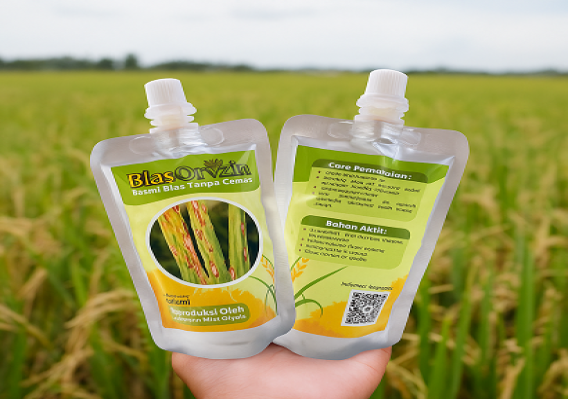UNY Students Create “BlasOryzin” Biofungicide to Prevent Blast Disease in Rice

A group of UNY students successfully developed an environmentally friendly innovation: a biofungicide made from fermented rice straw and a microbial consortium, named BlasOryzin. The product is designed specifically to prevent blast disease in rice plants and to increase the resilience of the plants.
This innovation was developed through the Student Creativity Programme in Entrepreneurship (PKM-K) year 2025. The development team consists of Indah Aulia Putri (Chemistry Education) as team leader, together with Keysha Rahma Darelly (Chemistry), Nur Azizah (Accounting), Rakha Yodha Givary (Management), and Diva Putri Fiestasari (Accounting). They were supervised by lecturer Dita Puji Rahayu, M.Pd.
According to Indah Aulia Putri, blast disease caused by the fungus Pyricularia oryzae is one of the serious threats to rice productivity in Indonesia; this pest attack can reduce harvest yield by up to 30 percent. Meanwhile, synthetic chemical pesticides commonly used by farmers often leave harmful impacts on soil and the environment.
From that problem, the UNY team initiated utilising rice straw waste — which is often underutilised or burned — into a useful product. Through fermentation enriched with a beneficial microbial consortium (Pseudomonas putida, Bacillus subtilis and Trichoderma sp.), BlasOryzin emerged.
Keysha Rahma Darelly explained that BlasOryzin is created via three main steps: (1) making a Liquid Organic Fertiliser (LOF) by mixing rice straw, water, EM4 and molasses, then fermenting for two weeks; (2) the fermented result is filtered to produce the basic liquid organic fertiliser; (3) beneficial microbes are added so the product is ready for packaging. The final product is a light brown liquid with a distinct fermentation aroma.
To maintain quality, BlasOryzin is packaged in a 100 mL standing-pouch with a small funnel and screw cap, labelled with brand, usage instructions, volume, production date, and an educational barcode. For usage: 20 mL of BlasOryzin is diluted in 1 litre of water and sprayed evenly on rice plants, especially on the leaves. In addition to controlling blast disease, BlasOryzin is also rich in nutrients such as nitrogen, phosphorus, potassium, and micro-minerals beneficial for rice growth.
The UNY team hopes BlasOryzin can help farmers face the threat of blast disease while reducing dependence on chemical pesticides. With affordable pricing and environmentally friendly design, the product is expected to be used widely in rice-producing regions in Indonesia. “Through BlasOryzin, we intend not only to solve an agricultural problem, but also to utilise rice straw waste that has been underutilised,” said the team.






